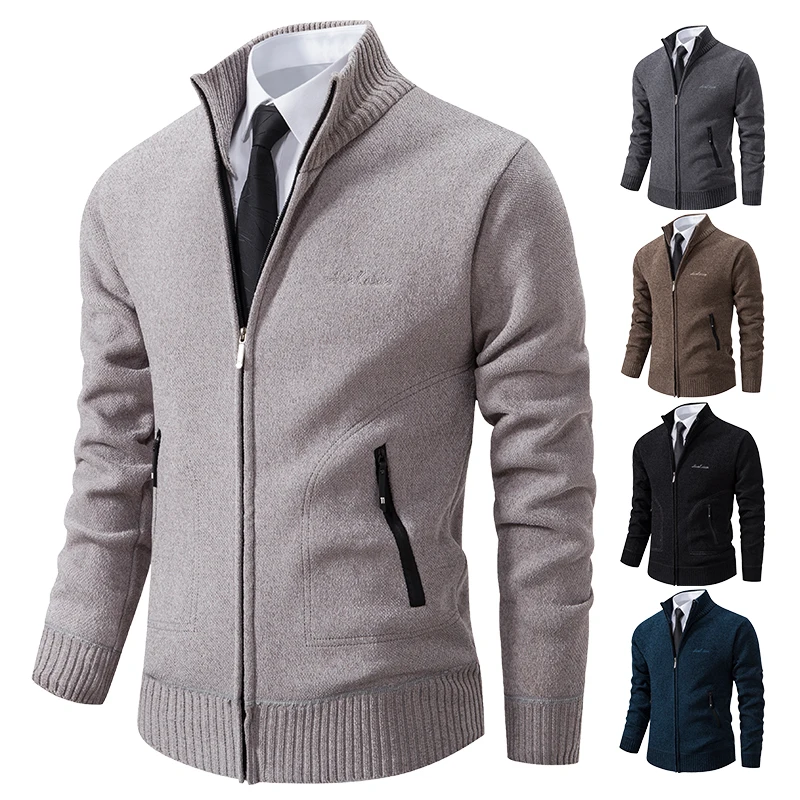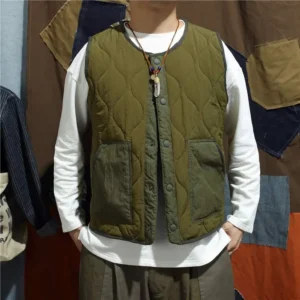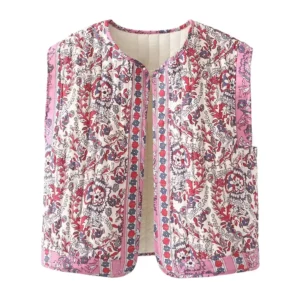Understanding Cashmere Quality: The Impact of Geography on Fiber Properties
Cashmere stands as one of the world’s most luxurious natural fibers, harvested from the soft undercoat of specific breeds of goats. What many don’t realize is that the geographic origin of these fibers plays a crucial role in determining the very qualities we treasure most: softness and durability.
The relationship between a cashmere goat’s habitat and the fiber it produces is remarkably direct. Cashmere quality is heavily influenced by the specific environmental conditions where the goats live—including extreme temperature variations, altitude, and available vegetation. These natural elements trigger biological adaptations in the animals, directly affecting the characteristics of their protective undercoats.
When evaluating quality cashmere, two primary measurements stand out as definitive: fiber fineness (measured in microns) and fiber length (measured in millimeters). These aren’t arbitrary metrics but direct indicators of how the cashmere will feel against your skin and how well it will withstand regular wear. The finest cashmere comes from regions where goats endure temperature extremes reaching as low as -40°F (-40°C), forcing them to develop incredibly fine, dense undercoats for survival.
Major cashmere-producing regions include Inner Mongolia, Mongolia, the Himalayan region, parts of China, Iran, and Afghanistan—each imparting distinct characteristics to their fibers. Understanding these styling tips for cashmere cardigans begins with knowing how these regional differences affect the material itself.
For the discerning consumer, recognizing these geographic influences isn’t just academic—it directly impacts the quality, performance, and value of every cashmere garment. Authentic premium cashmere can vary dramatically in price depending on origin, with Inner Mongolian cashmere often commanding top dollar for good reason. Delving deeper into cashmere origins and quality guides reveals how geography shapes every aspect of this precious material.
The Science of Cashmere Quality: Measurable Fiber Properties
The exceptional qualities of cashmere don’t happen by chance. Each garment’s performance—its softness against your skin, its ability to retain shape, and its longevity—directly relates to specific, measurable properties of the fibers used to create it.
Three critical properties determine cashmere quality:
- Fiber Fineness (Diameter): Measured in microns, with finer fibers creating softer fabric
- Fiber Length: Measured in millimeters, with longer fibers producing more durable, pill-resistant garments
- Fiber Crimp: The natural waviness that creates loft and insulation
These properties form the foundation of the cashmere grading system:
- Grade A: 14-16.5 microns, with fibers typically 36+ mm long
- Grade B: 16.5-19 microns, with fibers typically 30-35 mm long
- Grade C: 19+ microns, with fibers typically below 30 mm long
What makes finer fibers feel softer? The science is fascinating—cashmere fibers have microscopic scales on their surface, similar to other animal fibers. The finer the fiber, the fewer scales per unit length, creating less friction against your skin and thus a smoother, softer sensation. This explains why a seemingly tiny difference in micron measurement can create a dramatically different tactile experience.
These properties interact in complex ways. A cashmere garment might feature extremely fine fibers (excellent for softness) but if those fibers are too short, the garment will pill quickly and lose its luxurious feel. Conversely, longer fibers might be slightly coarser but create a more durable product that maintains its quality through years of wear.
Understanding these measurable properties provides the foundation for judging cashmere quality by touch and recognizing the superior characteristics that specific regions impart to their cashmere.
Fiber Fineness: The Foundation of Cashmere Softness
Fiber fineness—measured in microns (one-millionth of a meter)—serves as the primary determinant of cashmere’s legendary softness. To put this in perspective, while human hair typically measures between 70-100 microns in diameter, premium cashmere fibers measure just 14-16 microns—nearly invisible to the naked eye.
The biological mechanism behind fiber fineness is fascinating. In the harshest winter environments, cashmere goats develop an extraordinarily fine undercoat as a survival adaptation. The finer the fiber, the more effective it is at trapping body heat in tiny air pockets, providing better insulation against brutal cold. This explains why the coldest regions typically produce the softest cashmere—the extreme conditions of -40°F (-40°C) winters trigger the development of the finest protective undercoats.
What makes this significant for the wearer is how these microscopic differences translate to tangible comfort. When you touch cashmere, your skin detects the diameter of individual fibers. A difference of just 2 microns—invisible to the eye—creates a noticeably different sensation against your skin. Finer fibers also create more flexible, fluid fabrics with superior drape, allowing garments like cashmere turtlenecks to move naturally with your body.
This microscopic fineness also explains cashmere’s paradoxical nature: despite being extraordinarily lightweight, it provides exceptional warmth. The ultra-fine fibers create millions of tiny air pockets that trap body heat more effectively than virtually any other natural fiber, making it approximately eight times warmer than sheep’s wool while remaining remarkably lightweight.
Fiber Length: The Key to Cashmere Durability
While fiber fineness determines softness, fiber length plays the pivotal role in determining cashmere’s durability and resistance to pilling—those small, fuzzy balls that can form on the surface of knitwear with wear.
Longer fibers can be twisted together more securely during the spinning process, creating stronger yarn with fewer protruding ends. These tightly twisted yarns resist the friction that causes individual fibers to work loose and form pills on the surface. When cashmere pills excessively, it’s often because shorter fibers weren’t able to remain anchored in the yarn structure.
The harvesting method significantly impacts fiber length. Traditional hand-combing preserves the natural length of the fibers, carefully removing the undercoat during the spring molting season without cutting or breaking the fibers. In contrast, shearing—while faster and less labor-intensive—often cuts fibers and can damage their natural length and integrity.
This helps explain why properly harvested cashmere from certain regions commands premium prices. When fibers maintain their full natural length (ideally 36mm or longer), the resulting garment will maintain its appearance and soft hand-feel through years of regular wear. Understanding why cashmere pills and how to fix it begins with recognizing the critical importance of fiber length.
In practical terms, the difference between a cashmere garment that looks beautiful for many years versus one that deteriorates after a few wearings often comes down to this single measurement—an invisible quality factor that manifests in very visible ways over time.
Fiber Crimp: The Secret to Cashmere’s Warmth and Loft
Fiber crimp—the natural waviness or curl in cashmere fibers—might be less discussed than fineness or length, but it plays a crucial role in creating cashmere’s distinctive warmth and loft. This natural undulation creates tiny air pockets throughout the fabric, enhancing insulation by trapping body heat.
The degree of crimp varies significantly between regions, with goats from the coldest environments typically developing more pronounced crimp as another adaptation against extreme temperatures. When you compare cashmere from different origins, the variation in crimp becomes apparent both visually and in how the finished fabric performs.
Higher crimp contributes to cashmere’s remarkable thermal efficiency. This natural waviness explains how cashmere can be approximately eight times warmer than sheep’s wool despite being significantly lighter in weight. The microscopic air chambers created by crimped fibers act as insulators, making cashmere extraordinarily efficient at temperature regulation.
Beyond warmth, crimp also contributes to elasticity and shape retention. Fibers with good natural crimp have an inherent “memory” that allows the fabric to spring back to its original shape after being stretched. This resilience means garments maintain their intended silhouette and resist sagging over time.
Crimp also enhances the perceived fullness and softness of cashmere fabric. The natural springiness creates a plush, lofty feel that flat fibers simply cannot achieve. When you experience that distinctive lightweight yet substantial quality in premium cashmere, you’re feeling the benefits of optimal fiber crimp.
Inner Mongolia: The Gold Standard of Cashmere Production
Inner Mongolia’s reputation as the producer of the world’s finest cashmere is well-deserved, built on a perfect confluence of environmental factors and generations of specialized breeding. This autonomous region of northern China produces approximately 75% of the world’s cashmere, with good reason.
The unique environment creates ideal conditions for exceptional cashmere development:
* Winter temperatures plummet to -22°F to -40°F (-30°C to -40°C)
* Elevations range from 3,000-5,000 feet (900-1,500 meters)
* Annual temperature fluctuations can reach a staggering 140°F (60°C) difference between seasons
* Vast grasslands provide specific vegetation affecting fiber development

These extreme conditions force the native Arbus and Alashan goat breeds to develop extraordinary undercoats with distinct advantages:
* Exceptional fineness: typically 13-15 microns
* Superior length: 34-36 mm (1.34-1.42 inches)
* High natural crimp count for maximum warmth and resilience
The result is cashmere with an unmatched combination of softness, strength, and durability. When you touch premium cashmere sweaters made from Inner Mongolian fibers, the difference is immediately apparent—an almost silky softness combined with substantial body and resilience.
What makes Inner Mongolian cashmere truly exceptional is this perfect balance of qualities. While other regions might produce cashmere that excels in a single attribute—perhaps ultimate softness or maximum durability—Inner Mongolian cashmere delivers excellence across all measurements. This consistent quality has established it as the benchmark against which all other cashmere is compared.
For manufacturers like Estate Cloth who prioritize excellence, Inner Mongolian cashmere provides the ideal foundation for creating garments that deliver both immediate luxury and lasting quality.
Mongolia: Premium Cashmere with Exceptional Strength
Neighboring Mongolia proper—distinct from Inner Mongolia—produces cashmere with its own exceptional qualities, making it another premier source for luxury fibers. While sharing many environmental similarities with Inner Mongolia, subtle differences in climate patterns, grazing conditions, and native vegetation create cashmere with distinctive characteristics.
Mongolia’s cashmere-producing regions experience similar brutal continental climate extremes, though with slightly different precipitation patterns and vegetation varieties. These nuanced environmental differences manifest in the fiber qualities of Mongolian cashmere goats.
The cashmere harvested from Mongolian goats typically features:
* Fineness ranging from 14-16 microns
* Fiber length of 32-35 mm (1.26-1.38 inches)
* Particularly strong tensile strength and resilience
Mongolia holds profound historical significance in cashmere production. For centuries, nomadic herders have developed specialized breeding practices and harvesting techniques optimized for their specific environmental conditions. This deep cultural heritage of herding knowledge contributes to the quality of Mongolian cashmere.
What distinguishes Mongolian cashmere is its exceptional balance of softness and strength. While it may measure slightly coarser than the finest Inner Mongolian fibers, its superior tensile strength creates finished garments with outstanding resilience and longevity. For items that will see frequent wear, this balance of qualities creates excellent performance over time.
The subtle distinctions between Mongolian and Inner Mongolian cashmere highlight how even relatively small geographical differences can influence fiber development in ways that manifest in the finished garment’s performance and feel.
The Himalayan Region: The Origin of Ultra-Fine Pashmina
The Himalayan region—encompassing parts of Nepal, India (particularly Kashmir, from which cashmere derives its name), and surrounding areas—represents the historical birthplace of cashmere appreciation. Here, at extreme elevations of 10,000-15,000 feet (3,000-4,500 meters), the Changthangi goats produce what is traditionally called “pashmina,” considered by many to be the ultimate expression of cashmere’s softness.
This harsh, high-altitude environment creates unique conditions:
* Extreme elevations with thinner atmosphere
* Temperatures ranging from -40°F to 86°F (-40°C to 30°C)
* Specialized high-altitude vegetation
* Intense ultraviolet exposure
The Changthangi (or Pashmina) goats have adapted to these extreme conditions by developing incredibly fine undercoats with distinctive properties:
* Ultra-fine diameter: 12-14 microns
* Moderate length: 25-30 mm (0.98-1.18 inches)
* Exceptional lightness and loft
The result is cashmere with unmatched softness and lightness, though typically with less durability than its Mongolian counterparts. The trade-off between ultimate softness and long-term resilience represents a key difference between Himalayan and Mongolian cashmere varieties.
Traditional pashmina production in this region maintains centuries-old hand processing techniques, including meticulous hand-combing during the spring molting season. These labor-intensive methods help preserve the integrity of the delicate fibers.
For luxurious special-occasion garments where ultimate softness takes priority over everyday durability, Himalayan cashmere provides an unparalleled sensory experience. Women’s cashmere turtlenecks crafted from these ultra-fine fibers offer exceptional comfort and an almost ethereal lightness.
China (Other Regions): Variable Quality with Wide Application
Beyond Inner Mongolia, other Chinese provinces produce significant quantities of cashmere with considerably more variable characteristics. This regional diversity reflects China’s vast geographic range and varying climate conditions.
China’s cashmere production spans regions with dramatically different environments:
* Northern regions closer to Mongolia produce higher quality fibers similar to Inner Mongolian standards
* Central and southern regions generally yield coarser, shorter fibers
* Elevation, temperature extremes, and vegetation vary tremendously across these diverse areas
This environmental diversity results in cashmere with a wide spectrum of properties:
* Fineness range: 15-19 microns
* Length range: 28-34 mm (1.1-1.34 inches)
* Greater variation in crimp, color, and overall consistency
The variable nature of cashmere from these regions makes quality control particularly important. Without careful sorting and processing, these fibers can produce inconsistent finished products. However, when properly graded and manufactured, they can create excellent mid-range cashmere products suitable for many applications.
The wide availability and broader quality spectrum of cashmere from these regions make it particularly suitable for more accessibly priced cashmere products. While it may lack the exceptional qualities of Inner Mongolian or Himalayan cashmere, properly processed Chinese cashmere from these areas can still deliver good performance at more moderate price points.
This regional diversity highlights an important principle in cashmere quality: the characteristics of fibers should match their intended use. Not every cashmere application requires the ultimate in fineness or longevity.
Iran and Afghanistan: Distinctive Durability with Historical Significance
The arid mountain regions of Iran and Afghanistan have a long but often overlooked history of cashmere production. These areas feature distinct environmental conditions that create cashmere with unique characteristics:
* Arid climate with significant seasonal temperature variations
* Rocky, mountainous terrain affecting both grazing patterns and diet
* Specialized vegetation adapted to drought conditions
The native cashmere goats of this region have adapted to these challenging conditions by developing undercoats with distinctive properties:
* Generally coarser fibers: 17-20 microns
* Variable length: 20-30 mm (0.79-1.18 inches)
* Exceptional tensile strength and wear resistance
While cashmere from Iran and Afghanistan typically lacks the extreme softness of Himalayan pashmina, it offers remarkable durability and resilience. These stronger fibers can withstand significant friction and wear, making them particularly suitable for certain applications where longevity takes priority over ultimate softness.
This region holds significant historical importance in the development of cashmere trade. For centuries, these areas served as crucial links in the ancient trade routes connecting East and West, with cashmere being one of the prized commodities transported along these paths. This historical context adds cultural significance to the cashmere produced in these regions.
The distinctive characteristics of Iranian and Afghan cashmere demonstrate how environmental adaptation creates specialized fiber qualities suited to different applications—a reminder that in cashmere evaluation, “better” depends entirely on the specific qualities desired for a particular use.
Beyond Geography: Other Factors Affecting Cashmere Quality
While geographic origin significantly influences cashmere quality, several other critical factors impact the final characteristics of cashmere garments:
Harvesting Methods:
* Hand-combing: The traditional approach that preserves fiber length and quality by gently removing loose undercoat during natural molting
* Shearing: Faster but can damage fibers, reduce length, and include more coarse guard hairs
Herd Management and Nutrition:
* Diet quality directly affects fiber development and fineness
* Proper healthcare maintains overall goat health and fiber quality
* Breeding programs can enhance desirable fiber characteristics
Processing Techniques:
* Dehairing efficiency determines how effectively coarse guard hairs are removed
* Spinning methods affect yarn strength and evenness
* Dyeing processes can preserve or compromise natural fiber qualities
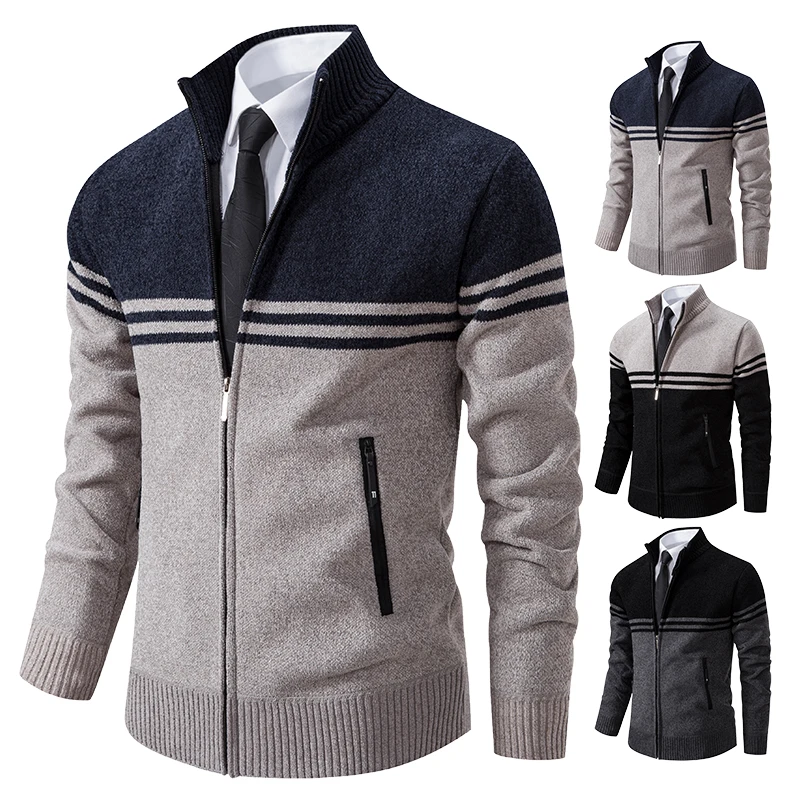
Manufacturing Decisions:
* Yarn construction (1-ply vs. 2-ply or higher) significantly impacts durability
* Knitting density affects warmth, weight, and resilience
* Finishing techniques can enhance softness but sometimes at the cost of durability
These factors explain why two garments made from cashmere of the same regional origin can differ dramatically in quality and performance. A lower-grade fiber expertly harvested and processed might outperform a theoretically superior fiber that underwent suboptimal processing.
For consumers, this underscores the importance of considering both origin and manufacturing quality. The finest men’s cashmere pullovers combine premium regional fiber with expert processing and construction techniques.
Premium manufacturers like Estate Cloth recognize that maximizing cashmere quality requires attention to every stage of production, from fiber selection through final garment construction—not simply sourcing from prestigious regions.
Consumer’s Guide: How to Identify Quality Cashmere by Origin
Armed with knowledge about regional cashmere characteristics, consumers can make more informed purchasing decisions. Here’s how to identify and evaluate quality cashmere:
Practical Quality Tests:
- The Cheek Test: Gently rub the cashmere against your cheek—truly fine cashmere feels soft without scratchiness
- The Light Test: Hold the garment up to light; premium cashmere has a subtle luster without appearing shiny
- The Spring Test: Crush the fabric in your hand; high-quality cashmere springs back quickly with minimal wrinkling
- The Pilling Assessment: Rub the surface gently—quality cashmere resists immediate pilling
Understanding Origin Labels:
- Look for specific regional designations rather than general “100% cashmere” labels
- Be aware that “Made in” labels refer to garment construction, not fiber origin
- Premium brands typically specify fiber origin (e.g., “Inner Mongolian cashmere”)
Price-Quality Relationship:
- Expect significant price differences between regional varieties
- Ultra-fine Himalayan cashmere typically commands the highest prices
- Inner Mongolian cashmere balances premium quality with better durability
- Other Chinese regions offer more accessible pricing but variable quality
Matching Quality to Purpose:
- Investment pieces warrant the highest quality regional cashmere
- Everyday items benefit from more durable varieties with good softness
- Consider the intended wear frequency and expected lifespan
Cashmere Wrap Sweaters, Women's Cashmere Pullovers
$75.89 Select options This product has multiple variants. The options may be chosen on the product pageCashmere Cable Knit Sweaters, Women's Cashmere Pullovers
Price range: $111.82 through $112.93 Select options This product has multiple variants. The options may be chosen on the product page- Price range: $171.47 through $181.33 Select options This product has multiple variants. The options may be chosen on the product page
Cropped Cashmere Sweaters, Women's Cashmere Pullovers
$155.77 Select options This product has multiple variants. The options may be chosen on the product page- Price range: $87.29 through $91.47 Select options This product has multiple variants. The options may be chosen on the product page
Oversized Cashmere Sweaters, Plus Size Cashmere Sweaters, Women's V-Neck Cashmere Sweaters
$136.87 Select options This product has multiple variants. The options may be chosen on the product page
Understanding these evaluation methods helps determine whether cashmere cardigans are worth the investment for your specific needs. While premium cashmere represents a significant investment, its exceptional comfort, longevity, and timeless appeal can make it remarkably cost-effective when properly selected and maintained.
Is the Most Expensive Cashmere Always from the Best Region?
A common misconception equates highest price with best quality, but the relationship between cashmere price and value is more nuanced. While regional origin significantly influences quality, it’s just one factor among many that determine a garment’s true worth.
Premium regional cashmere (like Inner Mongolian) generally commands higher prices due to its exceptional characteristics. However, poorly executed processing and manufacturing can diminish these natural advantages. Conversely, cashmere from less prestigious regions can deliver excellent performance when expertly harvested, processed, and manufactured.
Several factors beyond origin affect final quality:
* Fiber grading and sorting precision
* Processing techniques that preserve natural fiber qualities
* Construction methods including yarn twist, ply, and knitting density
* Finishing processes that enhance softness while maintaining durability
This explains why experienced cashmere buyers don’t rely solely on origin or price as quality indicators. A moderately priced garment from a less renowned region but crafted with superior manufacturing techniques may outperform a higher-priced item that cuts corners on construction despite using premium fiber.
For consumers, this suggests a balanced approach: consider origin as important but evaluate the garment’s overall quality, construction, and suitability for your needs rather than assuming price alone guarantees performance.
Can You Feel the Difference Between Regional Cashmere Varieties?
The differences between cashmere varieties from different regions are not merely technical specifications—they create tangible sensory experiences that many people can detect with a bit of guidance.
Himalayan cashmere typically feels extraordinarily light and cloud-like against the skin, with an almost ethereal softness but less substantial body. Inner Mongolian cashmere balances remarkable softness with a more substantial hand-feel and resilient structure. Iranian and Afghan varieties generally feel sturdier and slightly less soft but with exceptional strength and body.
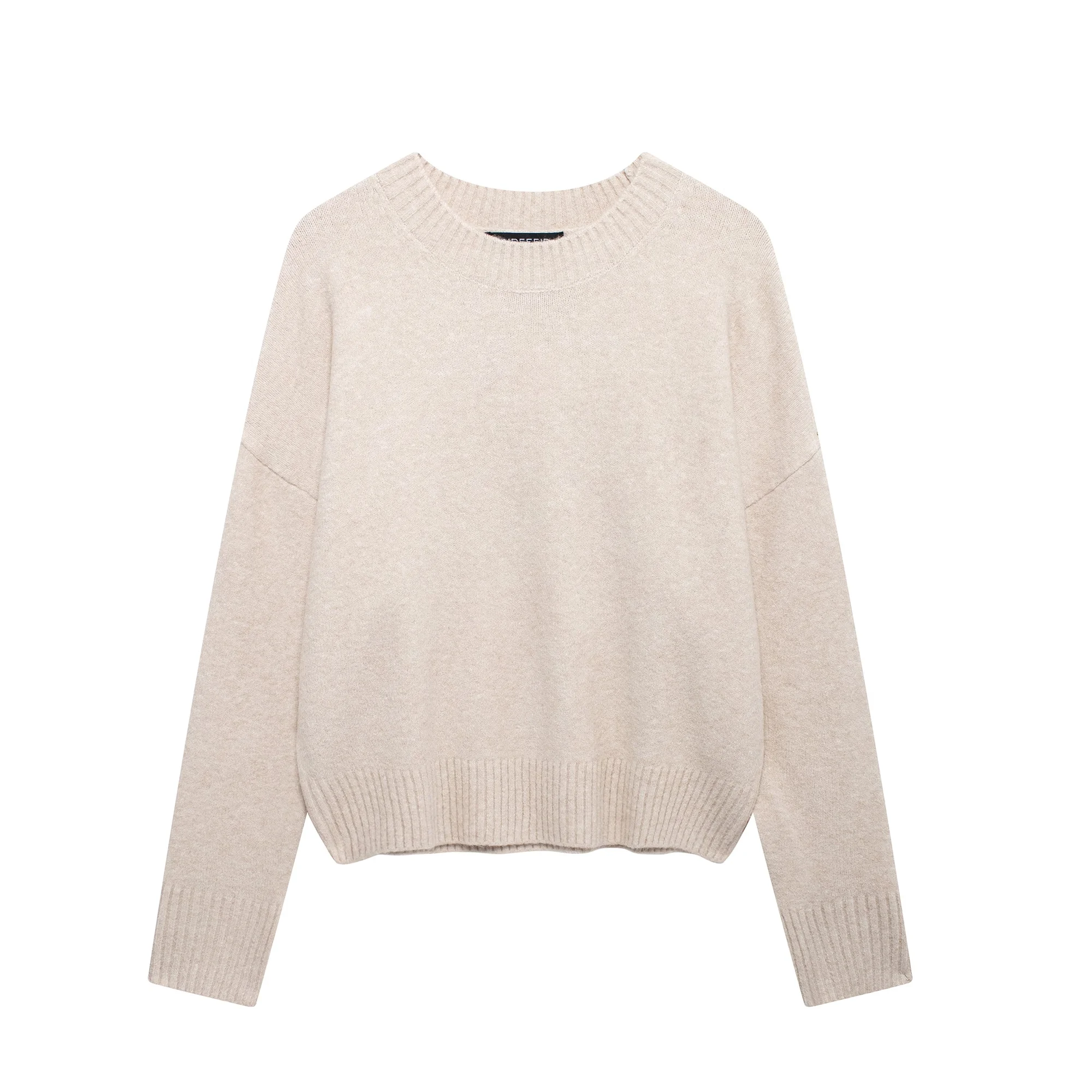
While cashmere connoisseurs and industry experts can often identify regional differences in blind touch tests, most consumers develop this sensitivity gradually through comparison. The distinction becomes particularly noticeable when comparing items side by side.
These sensory differences aren’t merely subjective—they reflect measurable properties that affect how the garment performs and feels throughout its lifespan. Understanding the contrast between brushed cashmere versus classic durability helps appreciate these subtle but significant variations.
For everyday wear, many consumers find the balanced qualities of Inner Mongolian cashmere provide the optimal combination of luxury and practicality. However, for special occasions or when ultimate softness takes priority over durability concerns, the exceptional hand-feel of Himalayan varieties might be preferred.
When Regional Origin Matters Most: Choosing Cashmere for Specific Needs
Different cashmere applications call for different fiber characteristics, making regional origin particularly relevant for certain uses.
For Investment Pieces and Heirlooms:
Inner Mongolian or Mongolian cashmere offers the ideal balance of exceptional softness and superior durability. These regions produce fibers that maintain their quality through years of wear, making them perfect for classic pieces intended to last decades.
For Maximum Comfort Against Sensitive Skin:
Himalayan cashmere’s ultra-fine fibers provide unmatched softness, making it ideal for items worn directly against the skin. While potentially less durable, the exceptional comfort makes it worth considering for special garments where comfort takes absolute priority.
For Everyday Durability:
Cashmere from Iran, Afghanistan, or certain Chinese regions offers excellent resilience for items that will see frequent wear. While not quite as fine as premium varieties, properly processed cashmere from these regions can deliver years of comfortable wear at more accessible price points.
For Layering Pieces:
Items like cashmere vests that primarily serve as intermediate layers rather than directly against skin can utilize a wider range of cashmere qualities effectively. Here, considerations like thermal efficiency and shape retention might outweigh ultimate softness.
The key is matching cashmere characteristics to your specific needs rather than assuming the most expensive or finest option is universally “best.” Understanding regional variations empowers you to select the optimal cashmere for each application, maximizing both immediate enjoyment and long-term value.
By considering both how and how often you’ll wear the garment, you can make informed decisions about which regional cashmere characteristics will deliver the best performance for your specific needs.

